Olea Europaea Calabres
Good to know
The Olea Europaea ‘Calabres’, also known as the Calabrian Olive Tree, is a distinctive variety of the European olive tree renowned for its resilience and robust fruit production. Originating from the Calabria region in Italy, this tree is cherished for its high-quality olives, which are used for both table olives and olive oil. The Calabres variety features narrow, silver-green leaves, a gnarled and picturesque trunk, and small, fragrant white flowers that develop into green to black olives. This tree is an excellent choice for both commercial olive production and ornamental planting.
- Botanical Name: Olea europaea ‘Calabres’
- Common Name: Calabrian Olive Tree
- Mature Height: 15-30 feet (3-9 meters)
- Mature Spread: 15-20 feet (3-6 meters)
- Growth Rate: Slow to moderate
- Light Requirements: Full sun
- Soil Requirements: Well-draining soil; prefers sandy loam but adaptable to various soil types
- Water Needs: Low to moderate; drought-tolerant once established
- Foliage: Evergreen, narrow, silver-green leaves
- Flowers: Small, fragrant white blossoms, blooming in late spring
- Fruit: Small green to black olives, ripening in late fall
Uses:
- Culinary: Produces high-quality olives that can be cured for table use or pressed for premium olive oil.
- Ornamental: Adds significant visual appeal to gardens with its gnarled trunk and silvery foliage.
- Landscaping: Ideal for creating focal points in gardens, as well as for lining driveways or walkways.
- Commercial Production: Suitable for large-scale olive production due to its robust yield and high-quality fruit.
- Container Planting: Suitable for large pots or containers, making it ideal for patios, balconies, or urban gardens.
Benefits:
- Culinary Uses: Provides high-quality olives for curing or oil production, enhancing culinary dishes and health.
- Health Benefits: Olives and olive oil are rich in healthy fats, antioxidants, and vitamins, promoting heart health and overall wellness.
- Ornamental Value: The gnarled trunk and evergreen foliage add year-round beauty to any landscape.
- Drought Tolerance: Once established, the tree is highly drought-tolerant, making it suitable for xeriscaping and low-water gardens.
- Longevity: Olive trees are long-lived and can provide beauty and utility for generations.
- Cultural Heritage: Connects to the rich agricultural traditions of the Calabria region in Italy, adding a touch of history and authenticity to gardens and landscapes.
The Olea Europaea ‘Calabres’ is a versatile and valuable olive tree variety that offers both aesthetic appeal and practical benefits. Its robust fruit production, adaptability, and timeless beauty make it a prized addition to any garden or orchard.
Debes acceder para publicar una valoración.
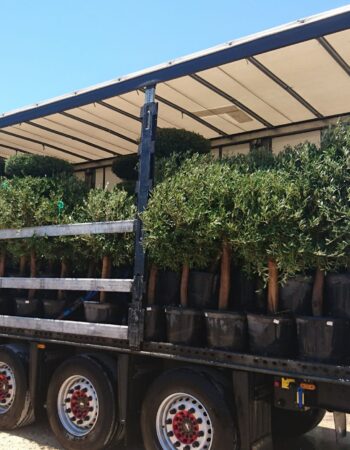
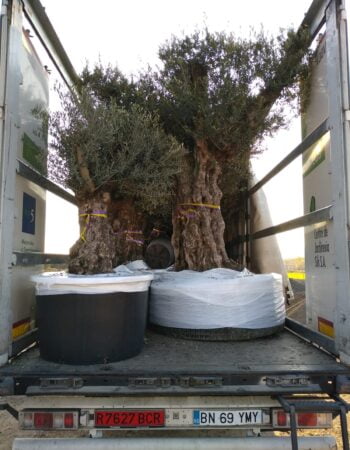
CAREFUL TREE TRANSPORTATION
At Treezom, we take great care in transporting your trees to ensure they arrive in perfect condition. Our expert team uses various methods, depending on the size and volume of the order, to provide safe and efficient delivery. Whether you're ordering a single tree or a bulk order, we guarantee high standards of handling and care throughout the process.
MULTIPLE SHIPPING METHODS
- Truck Delivery: Ideal for local or regional deliveries, ensuring a smooth and timely shipment of your trees directly to your location.
- Sea Containers (20’ or 40’): Perfect for larger orders or international shipping. Our sea containers are equipped to handle bulk shipments with optimal protection.
- Other Customized Solutions: Depending on the size and nature of your order, we can offer tailored shipping methods to meet your specific needs.
No matter the shipping method, we use specialized packaging and handling procedures to protect the trees during transit, ensuring they arrive healthy and ready for planting.
Below, you’ll find key tips tailored to this species’ requirements. Whether you’re new to plant care or have plenty of experience, these guidelines are here to support you in keeping your green companion healthy and vibrant.
- Planting:
- Choose a sunny location with well-draining soil or a large pot with good drainage.
- Dig a hole twice the width of the root ball and equal in depth if planting in the ground. For container planting, ensure the pot has drainage holes.
- Place the tree in the hole or pot, backfill with soil, and water thoroughly.
- Mulch around the base to retain moisture and regulate soil temperature if planting in the ground.
- Watering:
- Water regularly during the first few years to establish a strong root system.
- Once established, water moderately and allow the soil to dry out between waterings.
- Deep watering is recommended to encourage deep root growth.
- Avoid waterlogging as it can lead to root rot.
- Pruning:
- Prune to maintain shape, remove dead or diseased wood, and improve air circulation.
- Prune in late winter or early spring before new growth begins.
- Thin out crowded branches to allow sunlight to penetrate the canopy and to enhance fruit production.
- Fertilizing:
- Apply a balanced, slow-release fertilizer specifically formulated for olive trees in early spring.
- Follow the manufacturer's instructions for application rates.
- Additional feeding may be necessary during the growing season, particularly if the tree is grown in a container.
- Pest and Disease Control:
- Monitor for common pests such as olive fruit flies, scale insects, and aphids.
- Use appropriate treatments, including insecticidal soaps or horticultural oils, to manage infestations.
- Ensure good air circulation to prevent fungal diseases and avoid overwatering.
*This information is provided for informational purposes only. For more detailed care, please consult a professional Gardener or Arborist.


 SINGLE TREE
SINGLE TREE OUTDOOR POTS
OUTDOOR POTS








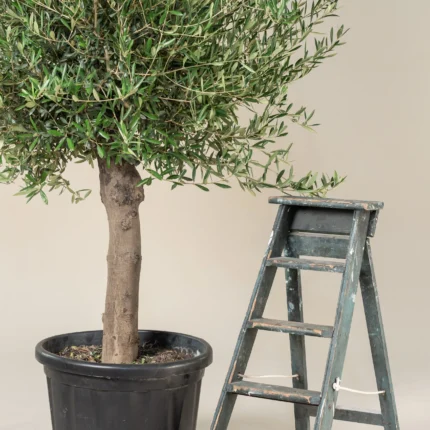

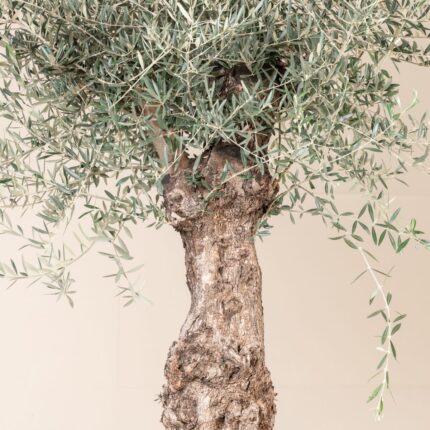
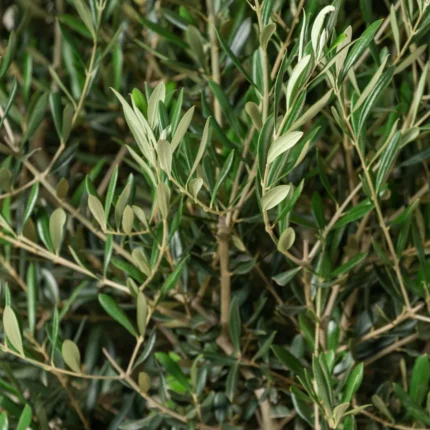






 Single Tree
Single Tree
Valoraciones
No hay valoraciones aún.